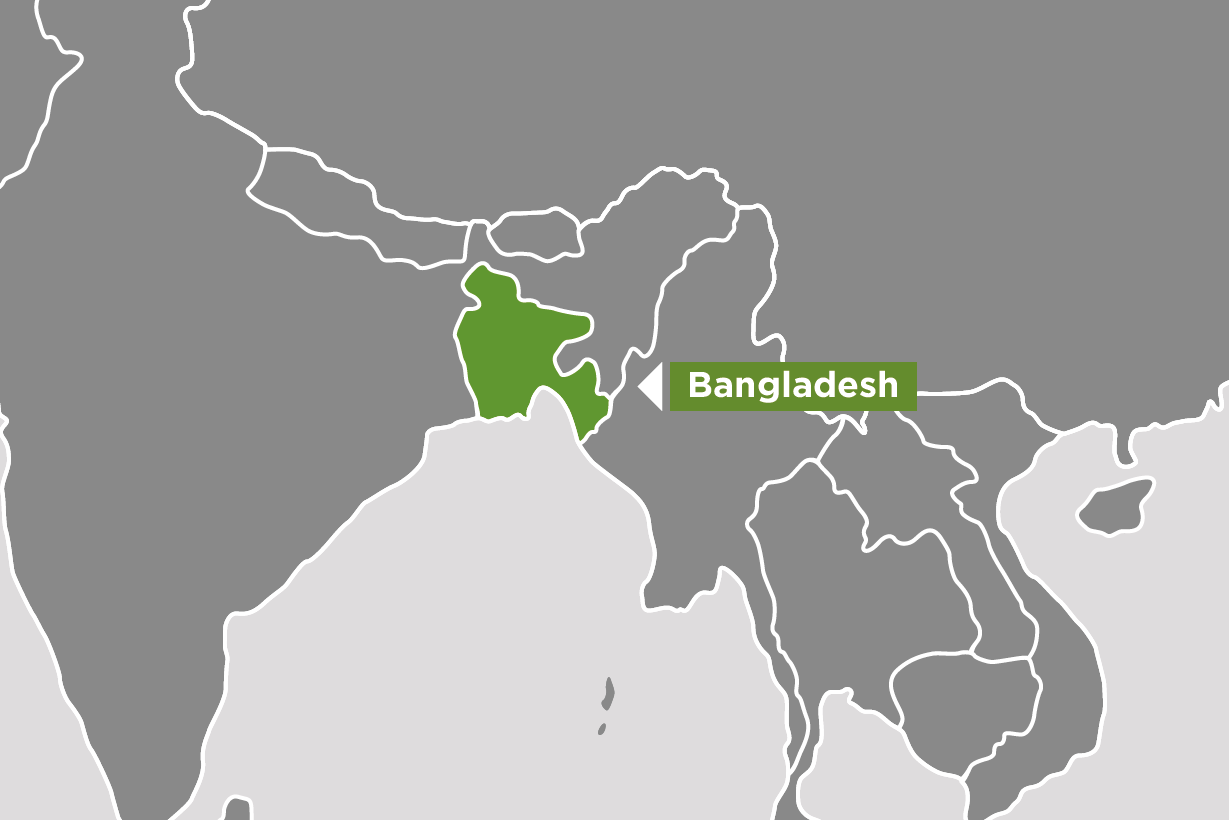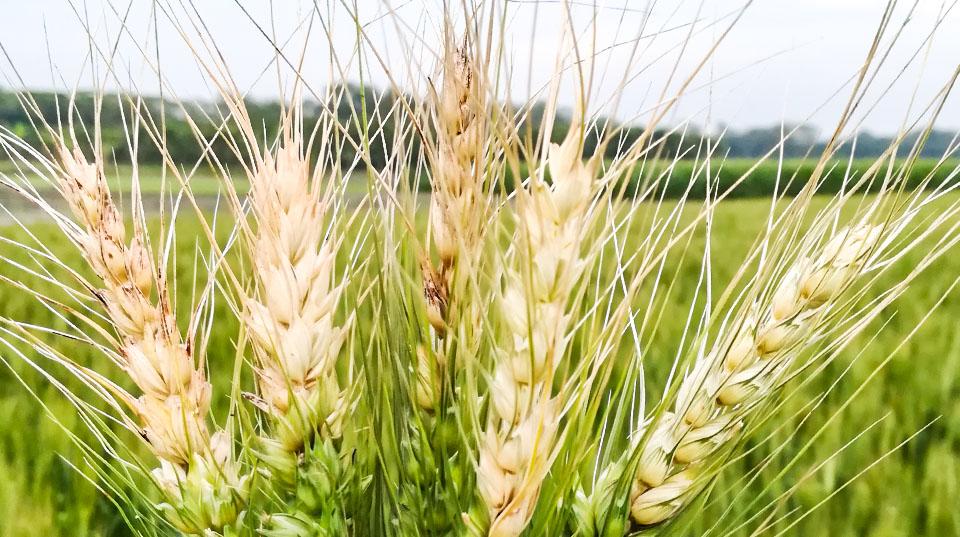Overview
This project aims to characterise novel sources of wheat blast resistance, identification, and molecular mapping of resistance loci/gene(s) and their introgression into varietal development pipelines for rapid dissemination of resistant varieties in Bangladesh.
Wheat blast (WB) is a devastating disease with limited control options and presents a global risk to wheat production. Caused by the fungus Magnaporthe oryzae, which also causes rice blast, a different pathotype (Triticum; MoT), is responsible for WB, as well as some other cereals including barley, durum, and triticale. WB is a relatively recent disease compared to rice blast. It was first identified in Parana State, Brazil in 1985 and soon spread to the main wheat growing regions in Brazil, Bolivia, Paraguay, and north-eastern wheat zone of Argentina. In South America WB represents the major biotic constraint to wheat production, affecting up to 3 million hectares. Yield losses are often significant and can lead to 100% crop loss when environmental conditions are conducive for disease epidemics.
Prediction models based on weather parameters have identified risk regions for WB epidemics in tropical and sub-tropical regions in India, Bangladesh, Pakistan, Ethiopia, China, USA, Australia. In February 2016, the first WB epidemic outside South America was recorded in Bangladesh. Immediate action was taken to characterize the Bangladeshi WB isolates, and the results confirmed its identity as MoT, exhibiting high genetic similarity to isolates from South America.
The introduction of WB into Bangladesh has caused great concern for food security in the South Asia region, home to 300 million undernourished people and whose inhabitants consume over 100 million tons of wheat each year. The 2016 WB outbreak in Bangladesh motivated the initiation of a series of projects to identify genetic resistance. Despite the significant progress made, it has been found that almost all the resistant lines identified in the Precision Phenotyping Platforms (PPPs) contain the same resistance gene, located on a piece of genome known as the 2NS/2AS translocation.
Immediately after the 2016 WB outbreak in Bangladesh, Government of Bangladesh, CIMMYT and FAO took prompt action and led to the formation of an emergency task force led by Prof. Dr. M.B. Meah, BAU, to develop immediate and short-term recommendations for the Ministry of Agriculture to mitigate WB disease in Bangladesh.
Expected project outcomes
- Validating the effects of genes Rmg1, Rmg8 and RmgGR119, in field experiments.
- Identifying novel WB resistant sources and generating the corresponding genetic materials for investigating the resistance QTL/genes.
- Monitoring the adoption of resistant varieties BARI Gom 33 and WMRI Gom 3 by women and men farmers to learn the drivers and obstacles that are involved in the process, to inform the design of a farmer-preferred product profile, and factors in impact pathway.
- Capacity building of BWMRI to operate major infrastructure in Jashore and Dinajpur at the individual and institutional levels.
- Enhancing collaboration between Bangladesh and other countries showing interest on WB.
- Training young wheat researchers and breeders in Jashore PPP.
Summary of outcomes to date
2021–22
Wheat blast (WB) is a devastating disease of wheat which moved from South America to Bangladesh in 2016 and threatens wheat production in South Asia.
- This project has established WB screening facilities in Bangladesh and Bolivia during its first phase, which allow researchers to look for wheat lines resistant to WB as sources of resistance for future high-performance varieties.
- Over the past 5 years, the project has screened more than 10,000 wheat lines and demonstrated that the main source of resistance to the disease in modern wheat varieties is from a translocation of 2NS chromosome segment from exotic grass Aegilops ventricosa. The project is progressing in genetic studies on WB resistance and has identified a range of markers, mostly on 2NS, that could be used in marker-assisted selection. However, no QTL has been found so far conferring the same level of resistance as the 2NS segment.
- The project has supported the release in Bangladesh and Bolivia of WB-resistant varieties containing the 2NS resistance gene. The project also found indications of other sources of tolerance to WB in diverse wheat lines and has initiated a program of pyramiding these sources of tolerance to improve resistance and increase the resilience of the resistance over the longer term by using a diversity of resistant sources.
- About 100 scientists from Bangladesh and countries at risk of WB have been trained over the course of the project.
- Future activities will include the ongoing search for new WB resistance genes, the identification and mapping of effective genes, the precision mapping of the 2NS resistance gene, the pyramiding of multiple sources of resistance and the breeding and dissemination to farmers of high-performance WB-resistant wheat varieties adapted to the existing and potential wheat growing areas of Bangladesh.
- In connection to the dissemination and adoption of newly released WB varieties, the socio-economic team is analysing the promotion and adoption of WB resistant varieties that were previously released and will be released during this project.
- This team is effectively working on developing an impact pathway that incorporate farmers’ preference, identify information dissemination channel, and the efficient system for scaling out WB resistant varieties to women and men farmers.




